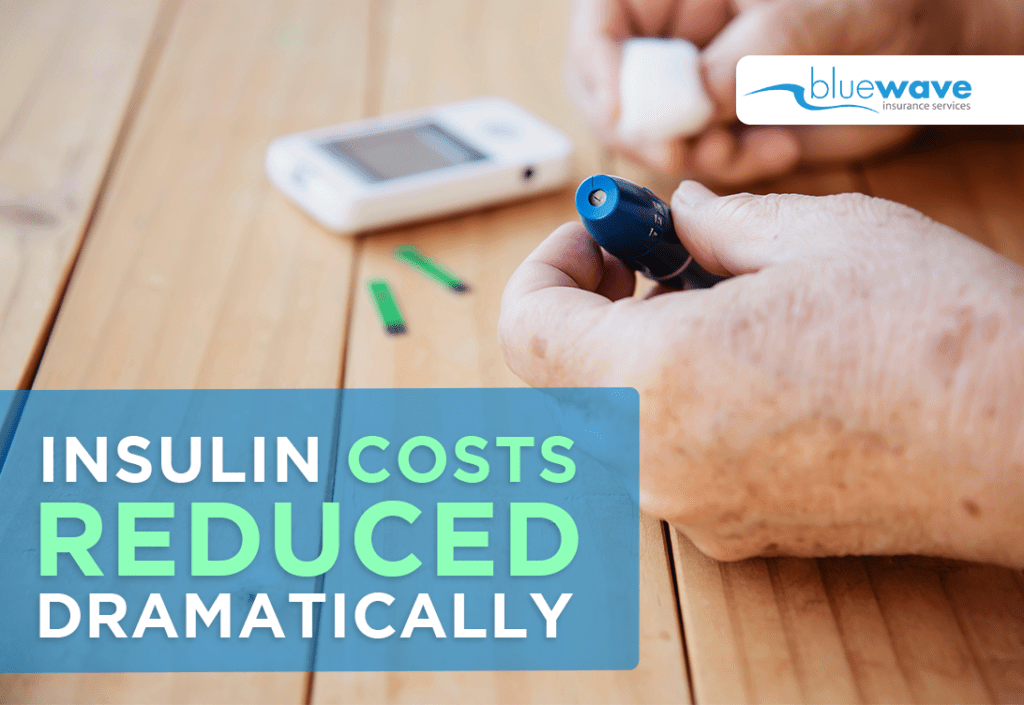
For people with Type 1 (and some with Type 2) diabetes, insulin is a vital drug. It keeps blood sugar levels stable and helps diabetes patients enjoy their daily lives. However, the cost of insulin can vary depending on your insurance. From 2007 to 2016, the out-of-pocket insulin cost for people with Medicare Part D nearly doubled from $324 to $588.
That said, the cost of insulin has declined since 2017, thanks in part to efforts from the White House. The Trump administration spent the last few years working to provide better prescription drug coverage. Trump’s Part D Senior Savings Model will likely save people thousands of dollars on insulin over the long term.
Trump Slashes Inclusion Costs
On May 26th, the White House and Centers for Medicare & Medicaid Services (CMS) announced the most recent measure to slash inclusion costs. Starting in January of 2021, these changes will help Medicare recipients save money on out-of-pocket prescription drug expenses. This is part of Trump’s Senior Savings Model, which has helped lower drug costs over the past several years.
In the past, Medicare required people to pay up to 25% of the price of insulin during the Initial Coverage Period (ICP) and the coverage gap. Now, Part D and Medicare Advantage Plan members will pay no more than $35 for one month’s supply of insulin during the same period. Thanks to these changes, those enrolled in Part D and Medicare Advantage Plans will pay much less for a broad set of insulins.
How Does This Affect Me?
The latest changes to the cost of insulin could save you hundreds of dollars per year. While previous years saw greater variations in insulin prices, the new plan will bring more uniformity and lower prices to many insulin providers. Analysts from the CMS predict that out-of-pocket spending per insulin user will drop by as much as 66%.
How Much Does Insulin Cost With Insurance?
Before the new maximum $35 copayment, Medicare recipients were spending an average of $675 on insulin every year. Under the new Part D Senior Saving Model, CMS expects this number to drop to just $229 per user. In short, you can plan to save as much as $446 per year on insulin alone. However, the exact amount will vary from person to person.
It’s important to note that the basic structure of Medicare will not change for insulin users. You still must pay your deductible. However, once you’ve met your deductible, you will only need to pay $35 per month during the ICP and the coverage gap (“Donut Hole”).
These changes will not only save you money, but they will also make your insulin costs more predictable. Rather than paying 25% after your deductible, you will only pay a flat $35 per month. During the ICP and coverage gap, insulin manufacturers will have to cover the difference in costs. Since insulin prices are always liable to change, this will help you plan your medical expenses with greater confidence.
Insulin Cost for Medicare Advantage and Part D
Who can save money under this new plan? In short, you will need to enroll in a Part D or Medicare Advantage Plan to save. However, there are certain limitations that you will need to consider. The new measures will not apply to every brand of insulin (though it will apply to the most common ones).
Additionally, manufacturers will not cover all insulin-related costs during the coverage gap. So, let’s breakdown how insulin costs and coverage vary with Part D and Medicare Advantage:
Medicare Advantage Plan
Many Medicare Advantage Plans provide prescription drug coverage. If you get your Original Medicare and drug coverage through an Advantage Plan, you will likely enjoy lower insulin costs. The $35 copayment will apply to insulin after the deductible has been met. However, not all Medicare Advantage plans are required to participate in the cost-saving measures.
Medicare requirements for insulin pump coverage differ. Insulin pumps do not fall under the realm of prescription drugs. As a result, the cost of an insulin pump will not apply to the new cost-saving measures. However, Plan B coverage may cover part of the cost as a form of Durable Medical Equipment (DME).
Medicare Part D
Those who have Part D plans that participate in the cost-saving measures will also benefit from these changes. Part D recipients will pay just $35 for a month’s supply of insulin during the ICP and coverage gap. As previously mentioned, this does not apply to all brands of insulin. Moreover, Medicare Part D does not cover Durable Medical Equipment (DME) like insulin pumps.
Conclusion
The White House mandated changes to reduce the insulin cost for many Medicare recipients. As of January 2021, most insulin producers must pay a higher price for insulin covered under Medicare. In addition, Part D and Medicare Advantage members will pay a maximum of $35 per month during the Initial Coverage Period and coverage gap. If the new measures do not apply to your current plan, you can change your Medicare coverage during the open enrollment period (October 15th – December 7th) to save on insulin.
This new premium does not apply to drug deductibles, nor does it apply to insulin pumps. These measures will only save you money on a broad set of insulins once your deductible has been met. In any case, CMS estimates that the average insulin user with Medicare will save up to 66% ever year.
thumb
If you have any questions about Part D or want to learn more about cost-sharing Medigap options, call us at 800-208-4974 today!
Read More: Is Eliquis Covered Under Medicare?
Alex Wender is the founder and CEO of Bluewave Insurance. He has been blogging about Medicare-related topics since 2010. Since then, he and his agency have helped thousands of people across the country choose the right Medicare to fit their needs.

